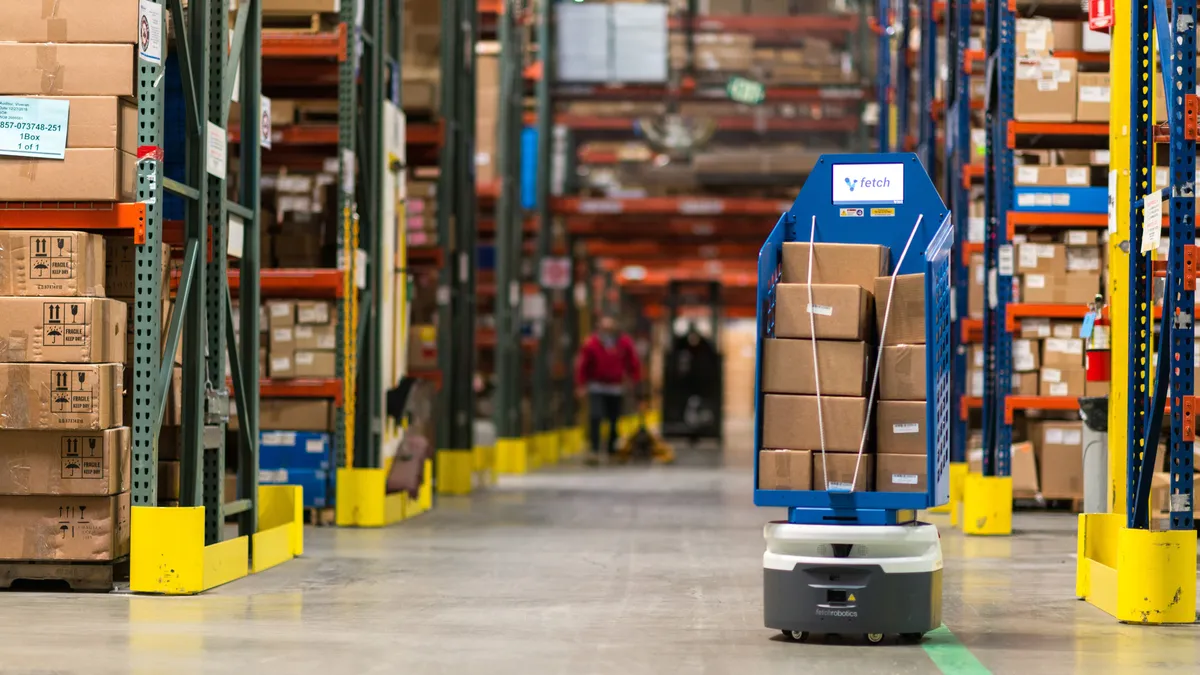Dive Brief:
- Energy use in the nation's storage and warehousing sector has gone relatively unchanged in recent years, according to the most recent data available from the Energy Information Administration (EIA).
- Large buildings, defined as buildings larger than 100,000 square feet, accounted for 55% of total warehouse electric consumption in a 2003 survey. This shrank to 47% in the most recent survey: large building consumption went unchanged and consumption in small buildings, defined here as buildings between 1,001 square feet and 10,000 square feet, grew. This growth was not statistically significant considering the survey's error.
- A drop in energy intensity was similarly not significant. This is a measure that would indicate improved efficiency if it goes down and all other variables remain constant, an EIA official told Supply Chain Dive.
Dive Insight:
While the most recent numbers don't show any significant sign of efficiency improvement, there are anecdotal signs that companies involved in the storage of goods are looking to make their facilities more efficient.
XPO Logistics, for example, points out in its 2017 annual report that "many" of its logistics facilities are ISO 14001-certified, which outlines the criteria for the use of an environmental management system. ISO says the implementation of such a system can lead to "energy efficiency improvements and cost savings."
XPO is also working with Nestle to build a warehouse for consumer-packaged goods that features a number of sustainability initiatives, including "environmentally friendly ammonia refrigeration systems, energy-saving LED lighting, air-source heat pumps for administration areas and rainwater harvesting," Joe Checkler, vice president of public relations for XPO Logistics, told Supply Chain Dive in an email.
XPO has worked with another unnamed company to implement a number of sustainability goals at a facility in the Midwest, Checkler said.
"We followed guidance from the US Green Building Council (USGBC) Leadership in Environmental and Energy Design (LEED) framework for Commercial Interiors and achieved LEED Gold certification after months of planning and cross functional collaboration," he said of the Midwest effort. "This achievement has assisted us in developing and sharing best known methods, as well and policies and procedures, for other operations that seek to advance the sustainability of their building and operating culture to leverage."
UPS acknowledged in its most recent sustainability report that, along with fuel for its plane and truck fleets, energy for its distribution centers and warehouse locations is a significant driver of energy needs and emissions. Most of this energy is currently coming from fossil fuels, UPS said. But the company wants to get 25% of its total electricity from renewable sources by 2025, according to its most recent sustainability report.
Tamara Barker, UPS' chief sustainability officer, said in the report that the company was planning to bring online 10 megawatts of solar last year and had other projects in the works.
FedEx has outlined similar goals surrounding reducing energy use in its more than "5,000 operating facilities, including air and ground hubs, local stations, freight service centers and retail sites," the company said in its sustainability report. The company said it has 649 facilities that are ISO 14001-certified and 14 LEED-certified facilities as of its most recent report.
FedEx has been retrofitting lighting in its facilities since 2007, completing 1,085 of these projects by 2017. The company said these efforts have resulted in saving more than 1 billion kWh of electricity. It has also installed solar energy systems at 20 different FedEx ground facilities as of 2017, saving 12,425 metric tons in emissions, according to the company.
This story was first published in our weekly newsletter, Supply Chain Dive: Operations. Sign up here.














